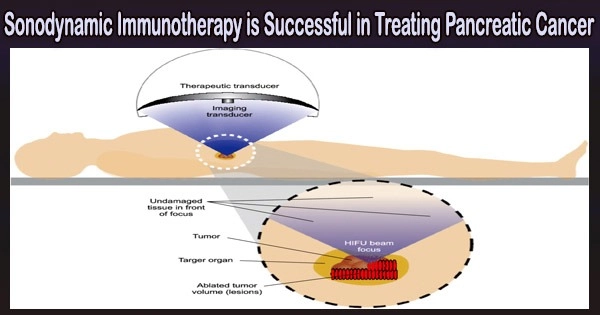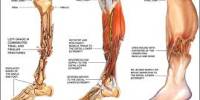Pancreatic cancer is a type of cancer that affects the pancreas, which is an organ located behind the stomach. It occurs when abnormal cells in the pancreas grow out of control, forming a tumor. Pancreatic cancer is considered one of the most aggressive and deadly forms of cancer, primarily because it is often diagnosed at an advanced stage when the cancer has already spread to other parts of the body.
A possible method of treating cancer is ultrasound. To treat deep tumors without harming healthy cells, ultrasonic waves can penetrate tissue up to 12 cm deeper than laser light, which is employed in photodynamic cancer therapy.
A group of scientists has created a sonodynamic cancer immunotherapy based on semiconducting polymer nanoparticles connected to immunomodulators that can be activated by ultrasound, as reported in the journal Angewandte Chemie International Edition.
The idea behind cancer immunotherapy is to strengthen or utilize our bodies’ natural defenses to combat cancer. However, to achieve this, it is necessary to get beyond the tumor cells’ inherent barriers to our immune system’s T cells.
Although certain immunotherapeutic medications can be used to do this, their effect must be restricted to the cancer cells themselves to avoid triggering an overly enthusiastic and harmful immune response.
In photodynamic therapy, cancer cells receive activatable nanomedicines on nanocarriers, which then build up inside the cells and release the drugs as a result of a reaction brought on by laser light.
However, because laser light cannot penetrate deeper layers of the human body, photodynamic treatment is only effective on superficial organs and cannot treat deep, challenging-to-treat tumors like pancreatic cancer.
In contrast, ultrasound waves can penetrate into deeply located tissues with fewer side effects. Here, Kanyi Pu and a team of researchers from Nanyang Technological University in Singapore and Donghua University in China have used ultrasound for the first time for an effective sonodynamic treatment of orthotopic pancreatic cancer in a mouse model.
The scientists created nanoparticles from a particular semiconducting polymer that reacts to ultrasound in order to create the sonodynamic immunomodulation molecular system. After being stimulated by ultrasound waves, it transferred its energy to molecule oxygen, where it generated singlet oxygen (a sort of reactive oxygen species) in the cells, which caused immunogenic cell death and destroyed cancer cells.
The “semiconducting pro-nanomodulator” or polymer also delivered two distinct immunomodulators into the cells, which were released via singlet-oxygen-induced bond breakdown following ultrasound activation.
In animal studies, the sonodynamic therapy proved incredibly successful; mice implanted with orthotopic pancreatic tumors fully recovered. The scientists used imaging techniques to track the buildup of the nanomodulators in tumor tissue after injection into the bloodstream. After that, the medications were activated by the ultrasound therapy, and the tumors quickly disappeared.
In other, healthy tissue, the nanomodulators that had not been activated were harmless. “However, immune-related adverse events were observed in the liver after the injection of the free drugs,” Pu says, “acknowledging that the prodrug development is only at an early state.”
The team underlines how much more of the body may be reached with sonodynamic therapy than with photodynamic therapy, greatly extending the potential applications of immunotherapies that are triggered at tumor locations.
















